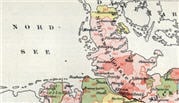Source Information

About Magdeburg, Germany, Deaths, 1874-1950
About this collection
This collection contains death records from Magdeburg covering the years 1874 up to and including 1950. This collection includes records from 26 local registry offices. Some offices represented independent communities until they were incorporated into the city. Magdeburg is located about 80 miles west of Berlin on the Elbe River. It is the capital of the German state of Saxony-Anhalt. The first documentary mention of Magdeburg was in 805. Standing at the junction of important trade routes, the city quickly developed into a significant industrial center. By the late Middle Ages it was one of Germany's largest cities. The Protestant Cathedral of Magdeburg and numerous other religious sites attest to Magdeburg's important role during the Reformation. At the beginning of this collection, Magdeburg was the capital of the Province of Saxony in the Kingdom of Prussia. From 1918 to 1933, it was part of the Free State of Prussia under the Weimar Republic. With the end of Nazi rule in 1945, Magdeburg came under the Soviet Zone of Occupation and in 1949 became part of the German Democratic Republic.
Beginning on October 1, 1874, local registry offices were made responsible for creating birth, marriage and death records in the former Prussian provinces. The collected records are arranged chronologically and usually in bound yearbook form which are collectively referred to as "civil registers." For most of the communities included in the collection, corresponding alphabetical directories of names were also created and can be found at the beginning of each register. While churches continued to keep traditional records, the State also mandated that the personal or marital status of the entire population be recorded.
What you can find in the records
Death records were created using preprinted forms that were filled in by hand by the registrar. Later, the forms were completed by typewriter. In each record the date of death usually differs from the date it was registered. Depending on the individual form or on the formulations used by the registrar, you may find:
- Sequential or Certificate Number
- Registration Date
- Informant: Occupation, Given Names, Last Name, Maiden Name, Residence, Address
- Deceased: Occupation, Given Names, Last Name, Maiden Name, Age/Birthdate, Denomination, Residence/Address, Birthplace, Marital Status, Spouse/Parents, Place/Date of Death, Time of Death. After August 1938, the records may also include a Cause of Death and cross references to corresponding marriage registers.
- Registrars' Signatures
In the alphabetical name directories you may find:
- Names, arranged alphabetically with a cross-reference to the record Certificate Number.
More about using this collection
Each record comprises one page. Additional events from the life of the deceased were sometimes recorded later on in the margins. These notes, sometimes referred to as "narration," can contain very useful information but they have not been indexed. As a result, information from the notes will not found via the search form. The “Informant” was usually a relative of the deceased. In later years death information was often submitted by hospital administrators or funeral directors. War casualties and victims were taken from military records. Those from August 1939 to January 1946 were made available by the "German Office for the Notification of Next-of-Kin of Members of the Former German Armed Forces who were Killed in Action" (WASt) in Berlin. Under "Browse this collection,” select the Civil Registration Office and Year Range for the desired records.
 Need help with the German language? Find resources in our German Research Center.
Need help with the German language? Find resources in our German Research Center.